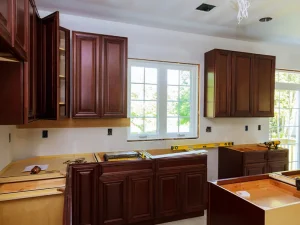Deck Contractors Murfreesboro transform ordinary outdoor areas into functional and inviting spaces. Their work combines design, structural integrity, and aesthetic appeal. Every project requires careful planning and precision. A well-built deck enhances property value and usability.

Choosing the right materials is crucial for deck longevity. Wood, composite, and PVC each offer unique benefits. Contractors assess durability, maintenance, and weather resistance. Proper selection ensures the deck remains attractive and safe.
Structural planning forms the foundation of any deck. Contractors evaluate soil, load-bearing capacity, and site layout. Accurate measurements prevent instability and future repairs. A solid structure guarantees safety and comfort for users.
Deck design balances functionality and visual appeal. Stairs, railings, and platforms are positioned for ease of movement. Spatial flow and accessibility are key considerations. Thoughtful design creates a welcoming outdoor environment.
Weather conditions influence deck construction methods. Moisture, wind, and sun exposure affect material performance. Contractors apply sealants, coatings, or treatments to protect surfaces. Proper precautions extend the deck’s lifespan.
Safety standards guide every deck project. Railings, supports, and spacing comply with regulations. Contractors ensure stability and prevent accidents. Safety is integrated into both design and execution.
Deck installation often requires excavation and foundation work. Posts are anchored securely into soil or concrete. Correct placement supports structural integrity. This groundwork ensures long-term performance.
Maintenance is part of a deck contractor’s service. Cleaning, staining, and inspections prevent damage from weather and wear. Regular upkeep preserves beauty and functionality. Contractors provide schedules and recommendations for care.
Custom decks reflect the owner’s lifestyle. Spaces can include seating, planters, or built-in lighting. Contractors integrate these features seamlessly into the design. Personal touches enhance both use and enjoyment.
Decks can extend living areas into gardens or patios. They bridge indoor and outdoor spaces naturally. Thoughtful placement maximizes views and sunlight. Contractors plan orientation for both comfort and aesthetics.
Lighting and electrical elements improve deck usability. Safety lighting illuminates stairs and pathways. Ambient lighting enhances evening gatherings. Professional installation ensures wiring is safe and discreet.
Composite decking reduces maintenance needs. Resistant to rot, warping, and insects, it is a long-lasting option. Contractors recommend finishes based on environmental conditions. Material choice balances cost, appearance, and durability.
Deck contractors also handle repairs and renovations. Cracks, loose boards, and damaged supports are replaced efficiently. Upgrades may include railings, extensions, or surface treatments. Timely repairs prevent more serious structural issues.
Environmental sustainability is increasingly relevant in deck construction. Recycled or sustainably sourced materials minimize ecological impact. Contractors advise on green choices without compromising quality. Sustainable practices enhance long-term responsibility.
Multi-level decks create dynamic outdoor spaces. Elevated platforms, terraces, and stairs allow diverse activities. Contractors design for both functionality and visual appeal. Complex structures require precise engineering and planning.
Waterproofing and drainage are key concerns. Proper slope and sealants prevent water damage. Drainage systems protect substructures from rot and decay. Contractors integrate these features seamlessly into the build.
Decks can include integrated seating and storage solutions. Benches, planters, and under-deck compartments optimize space. Custom features are tailored to the user’s needs. Functional enhancements increase usability without cluttering the area.
Railing systems vary in style and material. Wood, metal, or cable options each offer different aesthetics and durability. Contractors ensure railings meet safety standards. Stylish railings contribute to the deck’s overall appeal.
Deck contractors coordinate with landscaping teams for cohesive outdoor design. Decks may connect to pathways, gardens, or water features. Integration ensures a smooth transition between spaces. Cohesion enhances both beauty and utility.
Weather-resistant coatings protect decks from sun and rain. UV-resistant finishes prevent fading and cracking. Contractors apply sealants based on material type. Proper finishing extends lifespan and maintains visual appeal.
Deck construction must consider load capacity. Seating areas, hot tubs, or heavy furniture require reinforced supports. Contractors calculate structural limits carefully. Safety and durability are paramount in all designs.
Pergolas, gazebos, or shade structures complement decks. Contractors can integrate overhead elements for comfort and style. These additions improve usability during hot or rainy conditions. Thoughtful placement enhances the outdoor experience.
Seasonal maintenance ensures long-term performance. Cleaning, refinishing, and checking for loose boards are essential. Contractors provide guidelines for each season. Proactive care prevents costly damage.
Decks may incorporate advanced technology. Outdoor speakers, lighting, and smart systems enhance functionality. Contractors install discreet wiring and controls. Modern decks merge leisure with convenience.
Privacy features are common in modern deck designs. Screens, planters, and fencing protect against neighboring views. Contractors integrate privacy without compromising openness. Balancing privacy and aesthetics improves enjoyment.
Accessibility is a key consideration in deck construction. Ramps, wide steps, and railings accommodate all users. Compliance with accessibility standards ensures safe use. Inclusive design broadens usability for families and guests.
Deck contractors also manage permits and regulatory compliance. Local building codes dictate spacing, railing heights, and structural requirements. Proper documentation prevents legal issues and ensures safety. Compliance is integral to professional practice.
Winter and harsh weather preparation is part of maintenance. Snow removal, sealant application, and material checks prevent damage. Contractors advise on seasonal protection strategies. Prepared decks withstand extreme conditions better.
Deck contractors often provide design consultations. They evaluate property layout, sunlight, and aesthetic preferences. Recommendations balance beauty, function, and budget. Collaborative planning ensures a successful final product.
Integration with pools, hot tubs, or outdoor kitchens is common. Contractors design supports and drainage to accommodate additional features. Coordination ensures safety and seamless use. Integrated decks create multifunctional spaces.
Deck lighting improves ambiance and usability. Step lights, post caps, and string lights are installed strategically. Contractors ensure even illumination and safety compliance. Proper lighting extends evening enjoyment.
Structural inspections are essential for safety and durability. Regular checks detect rot, insect damage, or loosening. Contractors recommend repairs or reinforcements as needed. Preventive inspections safeguard users and property.
Deck contractors also specialize in historic or architectural restorations. Preserving original design while reinforcing safety is delicate work. Materials and techniques match the period or style. Expertise ensures both beauty and structural integrity.
Outdoor furniture and decor complement contractor designs. Built-in seating, tables, and planters enhance functionality. Contractors consider placement and weight distribution. Integration creates a cohesive and usable space.
Deck contractors combine artistry, engineering, and practical experience. Their work transforms outdoor areas into safe, beautiful, and functional spaces. Every project involves planning, material selection, and precision. The result is a long-lasting extension of the home.


